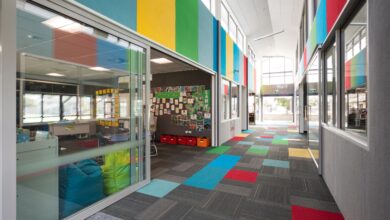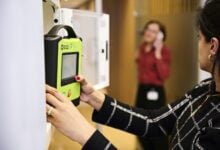Libraries that captivate, motivate and inspire
Modern school libraries offer much more than books. We look at the essential elements to ensure your library caters to everyone.
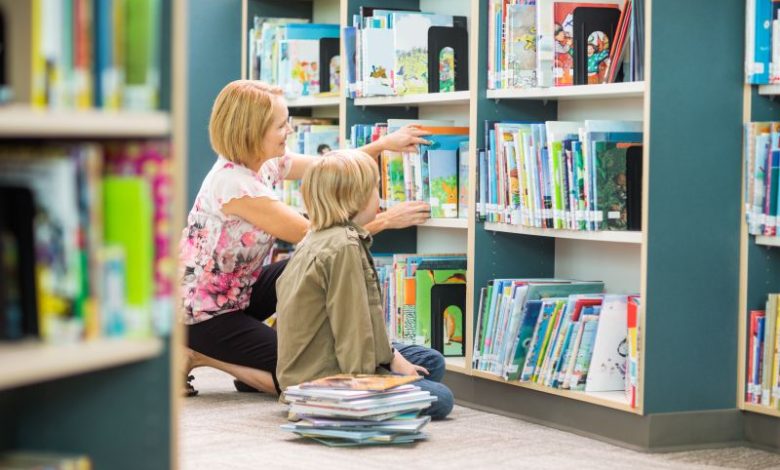
For many schools, libraries are a multifunctional space, serving as a classroom, breakout rooms, a place for students to relax at lunch, an access point for technology and a community meeting point.
The National Library of New Zealand cites school libraries, digital literacy and reading engagement as interdependent. The school library and staff play a critical role in helping to create a school culture that supports and encourages reading for pleasure, and digitally literate students. Digital literacy, in turn, needs proficient and engaged readers. School libraries are most effective, then, when they combine specialised staff, resources, and space.
Read the latest print edition of School News HERE
For students who might otherwise be disadvantaged, the library can provide the resources, technology, and stories they need. Books for reading or reference, as well as computers with internet access and digital learning tools can help ensure all students have the tools to learn. Libraries are a place where all are welcome, providing a safe place to share stories and ideas.
To ensure libraries maintain their functionality and appeal for students and teachers, attention needs to be paid to each aspect of the library. Diversity of resources and catalogue management, comfort and utility of furniture, interactive spaces like technology labs and databases, and appropriate acoustics to maintain a reasonable level of noise are all important factors to ensure the library is comfortable, useable and properly valued by everyone.
Managing your collection
First and foremost, libraries function as a source of knowledge. School libraries should contain a diverse collection of fiction and non-fiction across genres, and cater to appropriate age groups and interests. The existing collection should be constantly reevaluated to identify gaps.
An efficient, user-friendly library management system can simplify collection management, keeping track of all resources held by the library. These systems can manage loans of individual books or class sets, and in some cases can track borrowing of other items like laptops, cameras, and AV equipment.
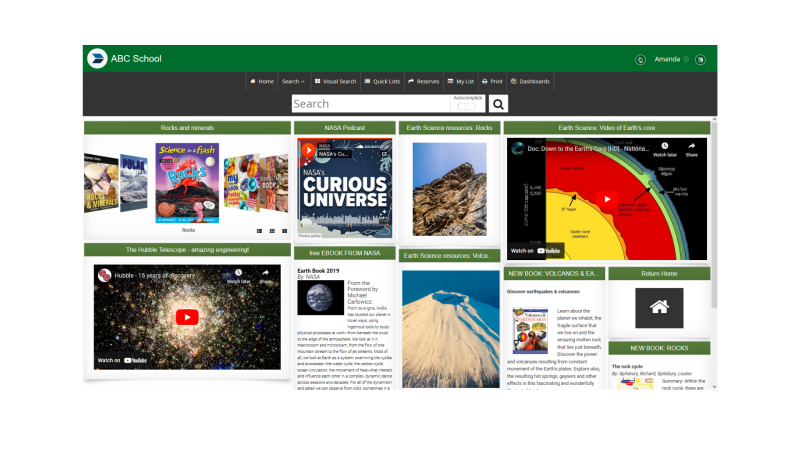
AJ Johnston, from Accessit Library said a library management system should help library staff open the world to their students, and reduce the time a librarian spends on administration.
“A system which links with the school’s other systems can help make borrower sync and communication seamless. A good system should also automate daily tasks like managing overdues, so librarians get the time back to take a lead in learning.”
And while books are at the heart of the library, Mr Johnston noted that the literacy journey is different from student to student. “Some may start with watching videos that capture their passion for a topic, which leads them on a journey to reading books or listening to audiobooks that keep them hooked. It’s about having the right media to connect with people and get them engaged in the library and learning.”
Schools are always heavily investing in assets, and a simple spreadsheet is no longer good enough to keep track. “Too many schools don’t realise how much they have invested in books let alone the other assets. This means they often aren’t even insured correctly,” Mr Johnston said.
“Leading library management systems can keep track of all assets in one place, from school drama costumes and musical instruments to school sports equipment. The ability to include the price paid and automatically include depreciation in the asset’s records is invaluable.”
Technology and digital collections
In the modern age, libraries function as a gateway to digital archives. E-books and audio books, access to virtual reality equipment, as well as internet connectivity are all important for learning and teaching. School libraries should facilitate access to a range of databases, and library staff should be proficient in using these, so all within the school community can learn to use these effectively.
Rachael Bethwaite from ePlatform said a digital library is an exceptional literary resource. “Digital libraries offer unparalleled convenience, adaptability, and access, 24 hours a day and 365 days a year.
“Students can customise their reading environment to meet individual needs and preferences. For teachers, it offers the solution to many reading challenges our students face today, providing an entire library in the palm of your hand!”
Ms Bethwaite shared some key features schools should look for in a digital library. “An eLibrary needs to be user friendly, dynamic and engaging for students, whilst offering a comprehensive admin suite and smooth integration with your existing library management system. And of course, excellent customer support!
“With some platforms, schools can choose between ready-made professionally curated collections, or they can build their own collection from scratch. The technical process is easy and straight forward with most library management systems. Choosing a specialised school eLibrary provider means a quick and seamless set-up.”
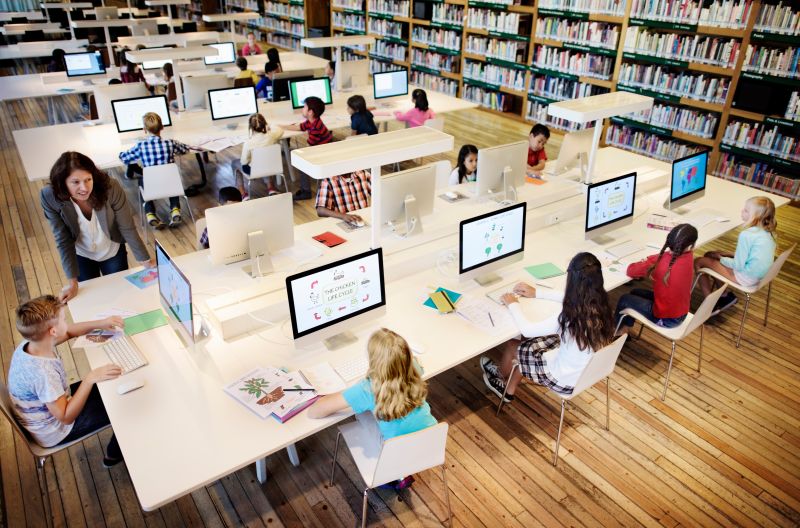
Organising the library space
Interactive spaces, whether digital or physical, are key in engaging students and staff. This is where flexible furniture and innovative, modular layouts can ensure a multifunctional, interactive space to suit the needs of schools and individual classes.
Different furniture can invite students into the space no matter what their needs. This may be traditional desk-and-chair set-ups for accessing digital resources or as a study space; it may also be modular benches or desks that can be rearranged for group study or discussion; beanbags, cushions and sofas may create comfortable and inviting areas for students who wish to do individual reading.
Modern school libraries act as a meeting place for students, teachers, and in some instances, the community. The space needs to remain flexible to accommodate different groups, whether they be engaging in learning activities or meetings. The ability to easily transform a space is invaluable in a busy school environment. As with other flexible spaces in a school, furniture on wheels or that can be easily moved is key.

While noise is generally kept to a minimum inside libraries, multiple classes or groups meeting at once in the space may raise the volume. Soft furnishings absorb sound, creating a quiet atmosphere inside libraries which encourages focus and collaboration. A carpeted floor can also aid in sound absorption.
Other acoustic solutions might include movable screens or pinboards, and soft curtains. These can be used to create distinct zones in the library, helping students identify areas for quiet study, or group conversations.
Desks and other furniture should accommodate access to technology, so ensure there are sufficient data points and power points in your library.
Investing in people
An effective school library relies on a skilled librarian for its smooth operation. While these staff members are often highly qualified, ongoing learning and development opportunities will ensure their skills remain cutting edge.
Librarians are kaitiaki of the knowledge held in the space, and a librarian familiar with both the school’s context, and efficient organisation and archiving, can best manage the space. Librarians are a resource in themselves, helping students and staff access what they need, and guiding students on researching journeys or discovering their own love for reading.




